
Ericameria is a genus of North American shrubs in the family Asteraceae.

Schinia, commonly called flower moths, is a large genus of moths belonging to the family Noctuidae. The genus has a Holarctic distribution with the vast majority of species being found in North America, many with a very restricted range and larval food plant.

Schinia arcigera, the arcigera flower moth, is a moth of the family Noctuidae. The species was first described by Achille Guenée in 1852. It is found in North America from Nova Scotia to Florida, west to Arizona and Idaho, north to Saskatchewan.

Schinia hulstia, or Hulst's flower moth, is a moth of the family Noctuidae. The species was first described by Tepper in 1883. It is found on US the Great Plains from North Dakota to Texas, in the south ranging eastward to Arkansas and westward to California.

Schinia obliqua is a moth of the family Noctuidae. It is found in North America including California and Colorado.
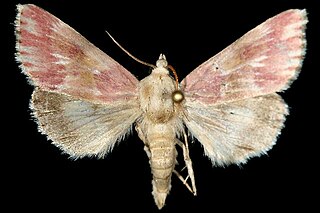
The bleeding flower moth is a moth of the family Noctuidae. It is found from North Carolina to Florida, west to Texas, north to Montana. There is also a disjunct population in Ontario.

Schinia sordida, the sordid flower moth or dingy schinia, is a moth of the family Noctuidae. The species was first described by John B. Smith in 1883. It is found in the United States from North Carolina to central Florida west to Kansas and Texas. It has also been recorded from Alabama.

Schinia aurantiaca is a moth of the family Noctuidae. It is found in North America, including California and Arizona.

Schinia walsinghami is a moth of the family Noctuidae. It is found from British Columbia south to California.

Schinia tertia is a moth of the family Noctuidae. It is found in the western parts of the United States from Minnesota and Illinois to Texas, west to California, north to Idaho.

Schinia albafascia is a moth of the family Noctuidae. It is found south-western Montana and Idaho, west to Oregon, south to central and southern California, east to Arizona, New Mexico and Colorado.
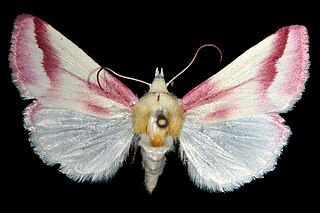
Schinia gaurae, the clouded crimson, is a moth of the family Noctuidae. The species was first described by James Edward Smith in 1797. It is found in North America from Illinois west across southern Saskatchewan and Alberta, south to Florida, Texas, Arizona and south into Mexico.
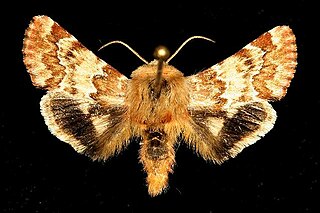
Schinia septentrionalis, the northern flower moth, is a moth of the family Noctuidae. The species was first described by Francis Walker in 1858. It is found in North America from Missouri to Quebec to South Carolina and Louisiana. Records include Colorado, Oklahoma, South Dakota and Texas. It is listed as threatened in the US state of Connecticut.

Schinia obscurata, the obscure schinia moth, is a moth of the family Noctuidae. It is found from Ontario and Quebec south into the United States, where it has been recorded from Illinois, New Jersey, South Carolina, Wisconsin, Kansas, Montana, Nebraska, North Dakota, Oklahoma and Texas.

Heliothinae is a small, cosmopolitan subfamily of moths in the family Noctuidae, with about 400 described species worldwide. It includes a number of economically significant agricultural pest species, such as Helicoverpa armigera and Helicoverpa zea.
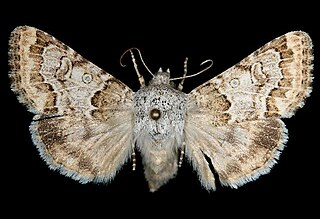
Schinia deserticola is a moth of the family Noctuidae. It is found from southern California to southeastern Arizona and north to west central Utah and southeastern Oregon.
Schinia aetheria is a moth of the family Noctuidae first described by William Barnes and James Halliday McDunnough in 1912. It is found in North America, including Arizona, Nevada, New Mexico and Utah.
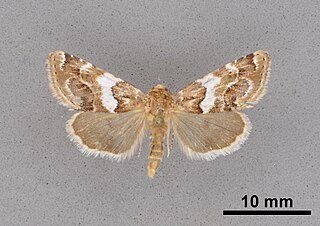
Schinia argentifascia is a moth of the family Noctuidae. It is found in North America, including Arizona, California, Baja California, Nevada, New Mexico, Texas and Utah.

Schinia biundulata is a moth of the family Noctuidae. It is found in western North America, including Arizona, California, Idaho, Nevada, Oregon, Texas and Utah.
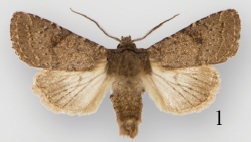
Protorthodes curtica is a moth in the family Noctuidae first described by Smith in 1890. It is found in North America from the interior of southern British Columbia southward in the West Coast states, mainly to the east of the Cascades and Coastal ranges, to southern California. It occurs in the Rocky Mountains in Idaho and Montana and in the Ruby Mountains of Nevada. The habitat consists of dry forested areas.


















